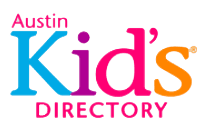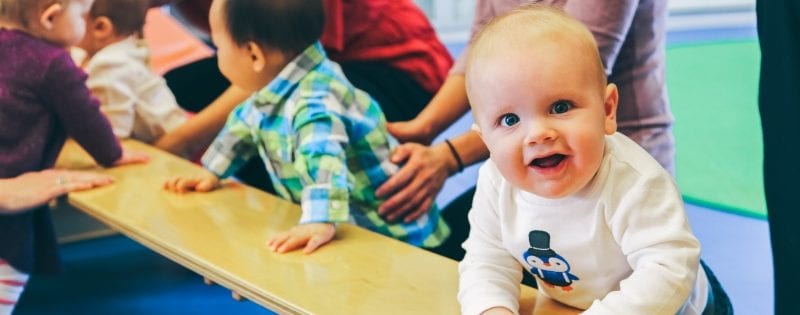The Power of Play Enhancing Your Child’s Social & Cognitive Development
The room is filled with floating bubbles and the sound of voices singing. Two-year-old Brandon pops a bubble between his hands with two claps. And his peer, Sarah, stands nearby popping her own bubbles with her fingers, hands and face. To her mother she says, “I got one” as a bubble pops on her nose.
Brandon watches Sarah closely then pops a bubble with his nose, shouting in her direction, “got it!” For the next minute, the two are relishing the social encounter they have created as they pop bubbles with their noses. It’s not the excitement of popping bubbles that seems to intrigue these children most, but the reciprocal interactions they are engaging in.
Opportunities to play are really opportunities to learn. During play children learn and practice social skills, develop cognitive abilities like problem solving, and refine language skills. Renowned psychologist Jean Piaget summed it up best: “Play is child’s work.”
Toy to Social Tool
In the beginning, toys and objects serve as play things for infants to suck, grab and swat and to eventually push, pull, drop and stack in an exploratory manner. It’s common to see a 1-year-old pick up an object and look at it as if he is thinking: What is this? How can I play with this? What will happen if I drop it? Will it move? Smell? Make noise? Through experimentation with toys and objects and through trial and error, the young child begins to make sense of the world.
Sometime between 12 and 18 months, children begin to use toys and objects for more than just a function, but as tools for initiating social interactions. For example, the bubbles Brandon and Sarah were popping served as a bridge leading to social interaction. Professor and author David W. Kritt stated it best, “Play serves as a catalyst for development…so that objects cease to dominate the meaning of situations.” It is the social encounters achieved through the use of toys that bring meaning to the child.
Toys are also tools for imaginative play. To the toddler, a beanbag is no longer just a soft weighted object that can be held or tossed. It becomes a telephone to hold at your ear, cheese to put on a sandwich, or a present to give to a friend.
What can you as a parent do to support your child as she experiments with toys and begins to use them as social tools? Provide your child with stimulating toys as well as opportunities to explore them at home or in playgroups. Play programs, like Gymboree Play & Music, foster interactive activities and provide developmentally appropriate toys for the young mind to explore.
Young children enjoy learning through physical play because it helps them refine budding motor skills. It teaches them to control their bodies, develop confidence and understand their abilities and limits. Physical play can also redirect frustration and pent up energy caused from the stress of encountering new situations. To support physical play, provide climbing pieces like steps or stairs for your child to tackle under your supervision.
Balls, beanbags and blocks are great for pushing, stacking, carrying and eventually for initiating social interactions with peers. Repetitive and simple activities with toys and objects help your toddler to confirm ideas of how they function. Once your child has the time to discover objects and toys, he will be ready to use them as tools for more complex social and cognitive activities.
Pretend Play, Real Learning
The toddler’s ability to use a toy as a tool for imaginative play is an important step for being able to engage in pretend play, an inevitable social milestone in the young child’s development. The ability to pretend emerges by 18 months of age and pretend play becomes more sophisticated by 3 years. It may seem like make believe to the adult eye, but it’s what a child uses for practicing adult roles like going to the grocery store or taking care of a baby, and acting out familiar events and actions like eating breakfast or getting ready for bed.
It’s no coincidence that expressive language skills rapidly grow around the same time that pretend play begins to emerge – social and cognitive abilities do not develop independently; they are intertwined. The use of language supports and enhances imaginary play and vice versa. When a child pretends, she uses words to express feelings and ideas. As pretend play becomes more sophisticated, so do language skills.
When your child begins to pretend, engage him in conversation. If he has a ball and says, “It’s an apple,” ask him where he got it: From the store? An apple tree? Bring up relevant words and ideas to enhance the play. Let’s make an apple pie. What do we need to make pie dough? Expand on is words and see where he goes with it.
It’s important to support pretend play because it encourages your child to use cognitive skills like problem solving (What do we need to make an apple pie?) and perspective taking (How does a baker make a pie?). The ability to pretend develops on its own without your intervention. You can help take your child’s pretending to the next level.
Make a Play Date
Peers become more interesting to young children, especially throughout the preschool years and beyond. A prominent researcher of social development, Kenneth H. Rubin et al., recently demonstrated that infants imitate simple toy actions of their peers as early as 12 months. Not only does this finding suggest that children as young as 1 year are trying to make sense of what their peers do, it supports the importance of the role peers play in a child’s development.
Scheduling play dates with other parents and children is an effective and fun way to provide your child with unstructured time to explore and play at her own pace and with peers. Participating in organized playgroups or parent-child participation programs is a great way for children to interact alongside each other with your supervision. Playgroups also provide you a place to share concerns, parenting tips, and adult conversation with other parents.
The play between your young child and his peers will most likely take the form of parallel play, play that is near peers but not collaborative. By 2 to 3 years, your child’s play will become more cooperative. You can guide your child through the change from parallel to cooperative play by surrounding him with developmentally appropriate activities he can enjoy with peers.
Remember not to expect too much from your young toddler in regards to turn taking or sharing. Make sure there are plenty of toys to go around in your playgroup and put away any special items you know your child will have a difficult time seeing others play with. By age 2 you will get more cooperation from your child when it comes to sharing. Eventually your child will form her own way of interacting with peers that satisfies you and works for her.
Gymboree Play & Music – Enhancing Social and Cognitive Development
What makes the playgroup setting so effective is that it offers an arena for your child to practice social skills with peers but with the security of having you close by for guidance and reassurance. Participating in Gymboree Play & Music programs allows you to expose your child to peers in a social environment.
Gymboree offers an array of developmentally appropriate play, music and art classes for you to enjoy with your child, as well as School Skills for when they are beginning to prepare for preschool. Creative activities, equipment, toys and props change from class to class to ensure maximum challenges for your child, whether 5 weeks or 5 years old. Trained Gymboree teachers facilitate activities for you to experience with your child, and introduce children to parallel play activities that will eventually evolve into cooperative, self-initiated play.
Through theme-related activities, Gymboree supports the child that is beginning to pretend, and supplies you with ideas for how to engage in pretend play which involves you in the learning process. Not only can a Gymboree slide and tunnel setup provide large motor activity, in your child’s mind, it can become a submarine under the sea to climb through or a monkey island at the zoo to climb on.
Gymboree toys and props like balls, hoops, scarves, beanbags and bubbles serve as tools to enhance your child’s pretend play and his ability to problem-solve and connect with peers. In the Gymboree environment, your child can learn social skills, practice sharing, explore new thoughts and make friends. You can develop networks with other parents and learn new songs and activities to share with your child.
Play is a powerful thing for both you and your child. It emerges on its own, but your involvement and guidance play an important role in your child’s social and cognitive development.
By Vanessa Gallo
Gymboree Play & Music
Program Developer and Trainer
To try a Gymboree class for free and see how it will benefit your child, visit www.gymboreeclasses.com
Arboretum Crossing
9333 Research Blvd
Austin TX 78759
512.451.8644
Cedar Park
1335 E Whitestone Blvd
Cedar Park TX 78613
512.259.7529
Southwest Central Austin
4220 S. Lamar # 150
Austin TX 78704
512.444.9626

